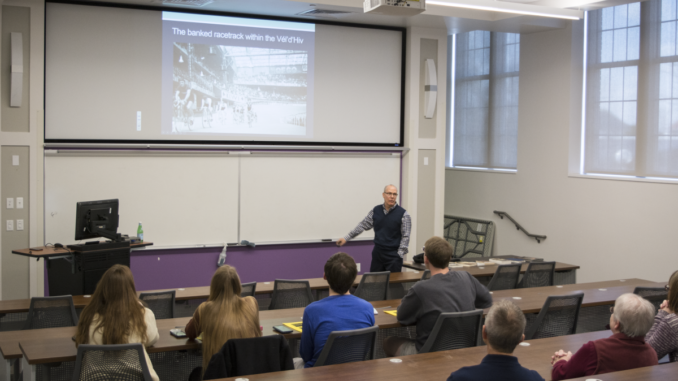
During 2017-2018 Timothy Farley, French professor at Truman State University, spent his sabbatical translating letters from the Holocaust.
“It’s the liberal arts and science culture at Truman that allowed me to branch out into translation and focus on one topic,” Farley said.
One such focus has been translating “Je vous écris du Vél d’Hiv: Les lettres retrouvée,” which in English translates to “I Am Writing You from the Vél d’Hiv: Lost Letters Recovered.” It is a collection of letters from 14 Jewish families in France before they were deported during the Holocaust.
He first started translation work in 1997 while taking a sabbatical in France, where he served as an English professor for a year. In the Université de l’Ouest in Angers, Farley guest-lectured the master’s program in translation, assisted students with their capstone translation projects and audited translation classes.
“I was helping students get their master’s translated short stories or excerpts of literature,” Farley said.
When it came to the translation process of the Holocaust letters, Farley said he always had to do a fair amount of prep work. For instance, he had to make sure that he read the text very carefully and gathered as much background knowledge as possible before sitting down to translate. Once he got a good sense of what he is working with, he would consult monolingual, bilingual and false cognate dictionaries, among other resources. Farley said dictionaries are tools, but it is very easy to use them wrong. One has to understand each word in its context, and a dictionary can quickly lead a translator astray.
Another early step of translating is coming up with many translation options. One part of a single sentence could have five or six options, and he can narrow down those options as he gets close to finishing the full translation of the text.
While translating, Farley might try to get through a paragraph or work on a sentence or chapter title. Other times he could be looking at the bigger picture and scanning a larger section of text and comparing it to the original, checking to make sure he didn’t leave anything out. He said there is a lot of rereading and revision involved.
“You want to write the text that’s faithful to the original text, yet make it as readable and believable as possible,” Farley said. “It’s quite a complicated process.”
Farley’s final steps in making a coherent, translated text involve going back and making his final choices of fully translated sentences.
After that, he has to go back and look through all of it again, checking to see that it is faithful to the source material while understandable in English.
“But as any author can tell you, they can always revise more,” Farley said with a smile.
While he was translating the book, he worked with some of the original letters in the archives in Paris, but he mainly viewed the transcriptions of the letters. He also worked with the author of the book, Karen Taieb, who serves as the head archivist of The Shoah Memorial in Paris.
While translating the book, Farley said he was not focused on translating the beauty of the French language because these were not literary texts. He said he was trying to give voice to the person who wrote each letter and get their humanity through to the reader. He focused on trying to communicate things about the text such as the author’s age, role in the family and where they were while in the process of getting deported.
Farley is still revising the book. After he polishes the text further, it will be ready for publication. He said he thought he was done, but he then noticed some things he wanted to change. Farley will be working with a student worker to go through the translation page by page, which he suspects will take up the rest of the semester. After going through that, he thinks he will be as close to being done as possible, and at that point he will begin seeking publication. Farley said his proudest accomplishment with the book is giving a voice to the people who died in the Holocaust.
